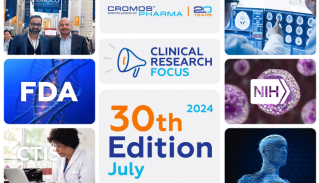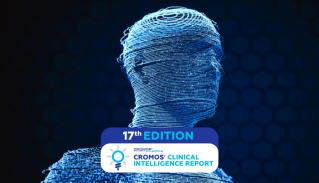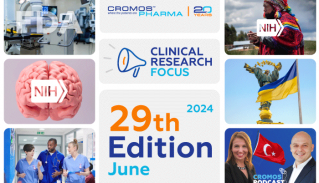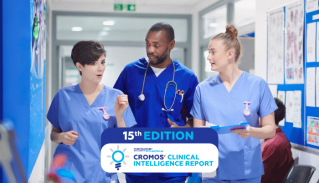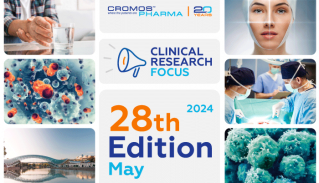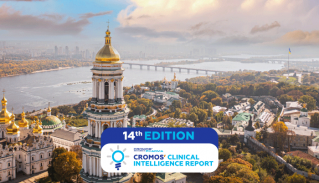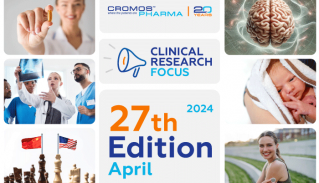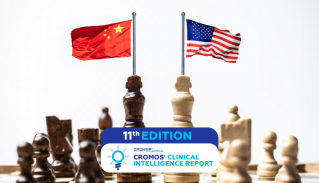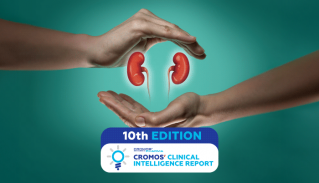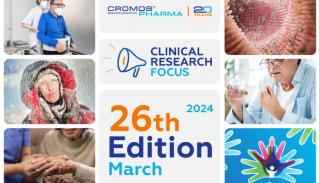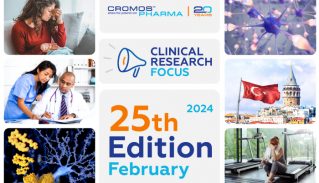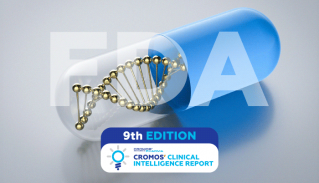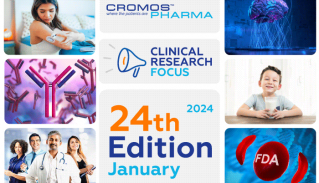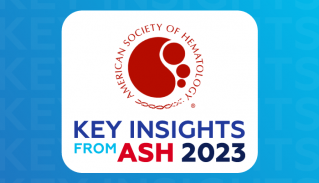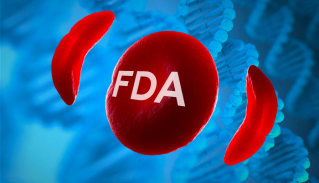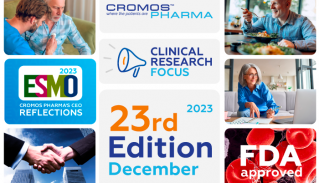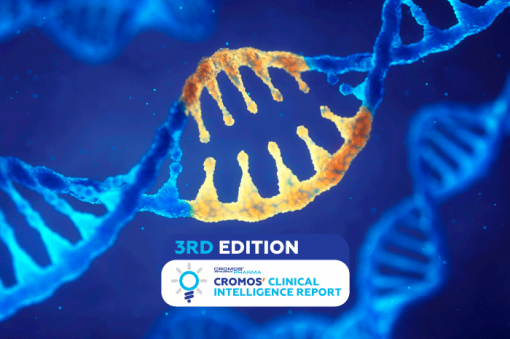
Cromos Pharma Contemplates Complex International GMO Research Program Regulations
Cromos Pharma has received the groundbreaking approval to conduct the first Genetically Modified Organism (GMO) clinical trial. This pioneering accomplishment not only underscores the company’s commitment to scientific advancement but also prompts a comprehensive reflection of the intricate regulatory landscape governing GMO trials in the US and EU.
Initiating the first GMO clinical trial in Georgia presented a notable challenge
Absence of prior GMO studies conducted in Georgia presented the hurdle of lacking established guidelines. To overcome this, Cromos Pharma tapped into the expertise of its international regulatory team. They diligently familiarized themselves with the precise regulatory prerequisites and ethical considerations outlined by the US and the EU regulators. Coordinating numerous foreign regulatory documents with Georgian authorities required both effort and skill.
While the trial’s US-based sponsor was well versed in US regulations, it sought guidance to meet the requirements for both EU member states and non-EU countries. In response, Cromos Pharma dedicated considerable effort to ensure alignment with these diverse local regulations.
Initiating the first GMO clinical trial in Georgia provided Cromos Pharma with a unique and valuable experience. It allowed the company to expand its expertise in this challenging field and develop effective strategies to overcome the hurdles associated with GMO trials. The knowledge will likely benefit Cromos Pharma in future GMO-based research endeavors and contribute to the advancement of safe and ethical GMO clinical trials.
Navigating GMO Complexity
GMO medicinal products, characterized by their intricate composition and potential implications for human health and the environment, introduce unique challenges within clinical trials. These modified organisms, engineered to yield therapeutic agents such as vaccines, gene therapies, and genetically modified cells for medical application, prompt divergent regulatory approaches between nations.
US Regulatory Landscape
The US Food and Drug Administration (FDA) is expecting to receive more than 200 investigational new drug applications per year, and, by 2025, to approve 10 to 20 cell and gene therapies per year.
Th FDA regulates CGT as “biological products,” aligning them with the regulatory principles applied to biologics. Homologous and minimally manipulated human cells used for implantation, transplantation, infusion, or transfer into a human recipient (Human Cell, Tissues and Cellular and Tissue-Based Products or HCTs/P) follow specific regulatory rules. The FDA’s Center for Biologics Evaluation and Research (CBER) oversees the regulation of CGT and HCTs/P. The FDA’s INTERACT Meeting modality fosters science-based discussions with regulators for initial advice. A Pre-IND meeting (Type B) can provide guidance on toxicology study designs and safety monitoring before Phase 1 studies commence.
The Regenerative Medicine Advanced Therapy (RMAT) designation was introduced to accelerate development and review. The RMAT designation, established in December 2016 through the 21st Century Cures Act, is aimed at therapies with regenerative potential and requires preliminary clinical evidence indicating potential to address unmet medical needs. RMAT designation shares several attributes with breakthrough therapy, such as the facilitation of development, expedited review processes, and a rolling review mechanism. Additionally, RMAT designation incorporates early discussions concerning potential surrogate or intermediate endpoints. This approach aids in supporting the acceleration of approval processes. Eligibility for RMAT designation hinges on certain criteria, including alignment with the definition of regenerative medicine and the drug’s intent to treat, modify, reverse, or cure a severe condition. Preliminary clinical evidence must indicate its potential to address an unmet medical need.
In the context of expediting the timeline for both product development and the evaluation of the license application, other noteworthy avenue includes the Orphan Drug Designation (ODD). These designations hold significant promise for hastening the overall development trajectory. To secure ODD, a product must fulfill the criteria for a rare condition, indicated by a prevalence of fewer than 200,000 individuals. Furthermore, substantiating evidence of non-clinical or clinical efficacy is essential. In cases where a drug does not meet the prerequisites for ODD but still holds the potential to address a severe medical condition, the product could still be eligible for the RMAT designation.
Unlike EU, clinical trials for investigational new drugs in the US generally do not require an Environment and Resources Authority (ERA) input, except for special conditions. The 21 CFR Part 25 and FDA guidance offer details on when a categorical exclusion applies, and the environmental assessment needed in a biologics license application. The FDA mandates viral-vector-shedding data collection during clinical trials but focuses on horizontal transmission rather than environmental risk. The FDA’s reasoning is that novel products are unlikely to significantly impact the environment due to limited usage in clinical trials, with close monitoring.
Apart from customary review and approval of the proposed clinical trial by local or central IRBs, if research involves recombinant or synthetic nucleic acid molecules, the Institutional Biosafety Committee (IBC) must ensure compliance with NIH Guidelines This involves assessing containment levels, facilities, institutional procedures, and personnel training. The IBC must also notify the Principal Investigator (PI) of their review, set and modify containment levels as needed, establish contingency plans for accidents, and report any issues to relevant authorities. For research under Section III-C of NIH Guidelines (involving research participants), the IBC evaluates biosafety concerns related to the research. Research cannot start until IBC approval is obtained at the clinical trial site, along with other necessary authorizations. IBC oversight might continue until the final dose is administered to the last participant, although IBCs can set their own oversight endpoints based on biosafety assessments. The responsibilities of institutions and IBCs are outlined in Section IV-B of NIH Guidelines. Institutions and IBCs should establish policies ensuring research compliance with the NIH Guidelines. Documentation for reviewing human gene transfer protocols may include scientific abstracts, proposed clinical protocols, preclinical study summaries, product descriptions (including vector systems, transgene information, and testing methods), and details about target cells and delivery methods.
As the clinical program nears the Biologics License Application (BLA), the Fast-track Designation can offer sponsors the opportunity for an expedited review procedure. This implies that the FDA will respond within 6 months after submission, in contrast to the 10 months required for a standard review. Additionally, the fast-track program allows for a rolling submission approach, permitting developers to submit sections of the BLA application that showcase substantial enhancements in the safety and efficacy of the novel treatment, diagnosis, or prevention of serious conditions, as compared to typical applications. It’s important to highlight that breakthrough therapies and RMAT designations qualify for all the benefits associated with fast-track designation, including the accelerated review timeline.
EU Regulatory Landscape
In the European Union (EU), CGT are classified as Advanced Therapy Medicinal Products (ATMP) and encompass a diverse group of biotherapeutics designed to address medical conditions with limited or no effective treatments. Given the novel nature of these therapies, a risk-based regulatory approach is crucial to ensure their development proceeds smoothly. This strategy should be built on solid scientific data that addresses both general regulatory recommendations and the unique characteristics of each ATMP product.
ATMPs include Cell and Gene Therapy Medicinal Products (CTMP and GTMP) and Tissue Engineered Products (TEP). The regulation for ATMPs is outlined in the Advanced Therapy Medicinal Products Regulation 2001/83/EC and Regulation 726/2004/EC. The definitions of these products are specified in these documents.
New regulatory pathways have been established in the EU to expedite development and review timelines. The Priority Medicines scheme (PRIME) aims to accelerate the development of therapies with major therapeutic advantages. It offers benefits like early rapporteur nomination, Scientific Advice meetings, and an accelerated assessment of market applications. Informal meetings can also be requested from the EMA’s Innovation Task Force (ITF) or individual National Competent Authorities (NCA). Scientific Advice (SA) meetings are available for comprehensive guidance.
The new Clinical Trial Regulation permits simultaneous assessment of a single Clinical Trial Application (CTA) by multiple NCAs which is submitted via Clinical Trials Information System (CTIS). For small and mid-size enterprises (SMEs) developing ATMPs, the EMA offers services like classification and certification of quality and non-clinical data. Joint advice from both EMA and FDA can be sought for advanced programs, aiding in clinical trial design and endpoint selection.
Regulatory designations such as Orphan Drug Designation (ODD) and PRIME significantly expedite development and review timelines. ODD is granted to products addressing rare conditions and offers advantages in terms of interactions with regulators and fee reductions. PRIME is designed for therapies with a major therapeutic advantage and provides enhanced regulatory support.
It is crucial to navigate challenges posed by variability in product quality and manufacturing processes for ATMP/CGT products. Variability from new starting materials and small-scale manufacturing processes can impact product quality and consistency. Developers should carefully select allogeneic cell sources, considering donor criteria and thorough characterization to mitigate variability. Regulatory agencies demand provisions for long-term safety evaluation for gene therapies due to potential oncogenicity and overexpression risks.
The EU has established a regulatory framework, consisting of the Contained Use Directive 2009/41/EC and the Deliberate Release Directive 2001/18/EC, to manage the risks associated with GMOs. This framework necessitates compliance with specific rules when working with GMOs and GMO-containing products. Under the Contained Use Directive, a site-specific risk assessment and notification to the national competent authority for GMOs are required. For high-risk GMO uses, consent from the authority is mandatory before commencement.
Sponsors often need to submit separate applications for clinical trial authorization (via CTIS) and GMO use authorization under national implementation of the Directives.
Diverse implementation across EU Member States adds complexity. Some require Contained Use Directive compliance, others the Deliberate Release Directive, while some adapt based on trial structure.
Industry position papers suggest that GMO applications could delay trial commencement by up to 12 months due to duplicative processes. Moreover, national GMO authorities might lack expertise in assessing GMO medicines. GMO clinical trial applications are challenging, with multi-country trials posing greater difficulties. Delays have raised concerns about hindering life-saving treatments.
The Committee for Advanced Therapies (CAT) assesses the quality, safety, and efficacy of gene therapies based on the marketing authorization application submitted by the manufacturers and prepares a draft opinion on the application. The Committee for Medicinal Products for Human Use (CHMP) reviews the recommendations from the CAT and adopts a final opinion on the marketing authorization decision. Apart from the standard marketing authorization pathway, conditional marketing authorization and marketing authorization under exceptional circumstances are also established. Gene therapies are eligible for conditional marketing authorization if they have a positive benefit-risk balance and are likely to satisfy unmet medical needs. The marketing authorization holders must fulfill the scientific obligations to submit the post marketing confirmatory evidence before the conditional marketing authorization may be converted into a standard marketing authorization. Unlike the conditional marketing authorization, the marketing authorization under exceptional circumstances is granted when comprehensive data could not be possible to generate due to the disease rarity or unethical considerations.
A Unified Approach for Global Progress
When considering a multicountry trial in the US and EU, collaborative guidance from both the EMA and the FDA can be sought. This approach holds considerable value for more sophisticated programs, particularly for pivotal Phase 3 clinical trials. Such collaborative sessions enable developers to gain insights into optimal clinical trial design and the selection of clinical endpoints. It’s important to emphasize that the joint nature of these meetings doesn’t necessarily entail uniform advice from both regulatory agencies.
For countries beyond the EU, the rapid and comprehensive adoption of practices established in the United States is generally advocated. This alignment reinforces a global commitment to the ethical and safe evolution of GMO clinical trials.
As Cromos Pharma remains at the forefront of scientific innovation, it invites stakeholders and partners to join the dialogue, fostering groundbreaking GMO clinical trials and contributing to the more expedited biotechnological advancement.


